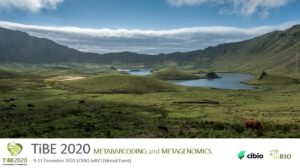THE NIGHT SHIFT: IMPROVING THE CONSERVATION ASSESSMENT OF NOCTURNAL FLYING INSECTS USING DNA METABARCODING
THE NIGHT SHIFT: IMPROVING THE CONSERVATION ASSESSMENT OF NOCTURNAL FLYING INSECTS USING DNA METABARCODING
Pedro Beja (CIBIO-InBIO, Portugal) | June 19, 2019 | 8th International Barcode of Life Conference, Trondheim, Norway
Background: There is evidence for insect population declines worldwide, putting at risk an unknown but potentially very large number of species, and hindering critical ecosystem services. However, except for a few groups such as pollinators, information is still scarce on how anthropogenic drivers affect insect communities. This is partly due to the bewildering diversity of insects and the taxonomic expertise required for species identification. DNA metabarcoding can help offsetting these problems, providing a relatively simple tool for assessing entire insect communities. Here we provide a metabarcoding case study to assess the conservation value of natural (cork oak woodlands and riparian galleries) and agricultural (olive groves and vineyards) habitats for nocturnal flying insects in a Mediterranean mosaic landscape. Insect communities were described from bulk samples collected in July (68 sites) and September (76) 2017 using UV light traps, aiming to quantify community variations in diversity, composition, and functional traits. Results: We detected 1081 operational taxonomic units (OTUs), most of which were Lepidoptera (429), Diptera (244), and Coleoptera (166), but species accumulation curves suggest that many species were missed in each habitat. Richness at each site was consistently lower in vineyards, while olive groves showed comparable richness to cork oak and riparian habitats. There were significant variations in community composition among habitats, with some species occurring exclusively in a single habitat. A functional trait analysis focusing on moths showed that oak and riparian habitats had larger species, while oak habitats had species with more specialized diets. Significance: We show the importance of natural habitats for insect conservation in farmed landscapes, but also the key role of extensive land uses such as traditional olive groves. More generally, we show the power of DNA metabarcoding to foster assessments covering simultaneously hundreds to thousands of species, providing much-needed information to include insects in conservation planning and management.







